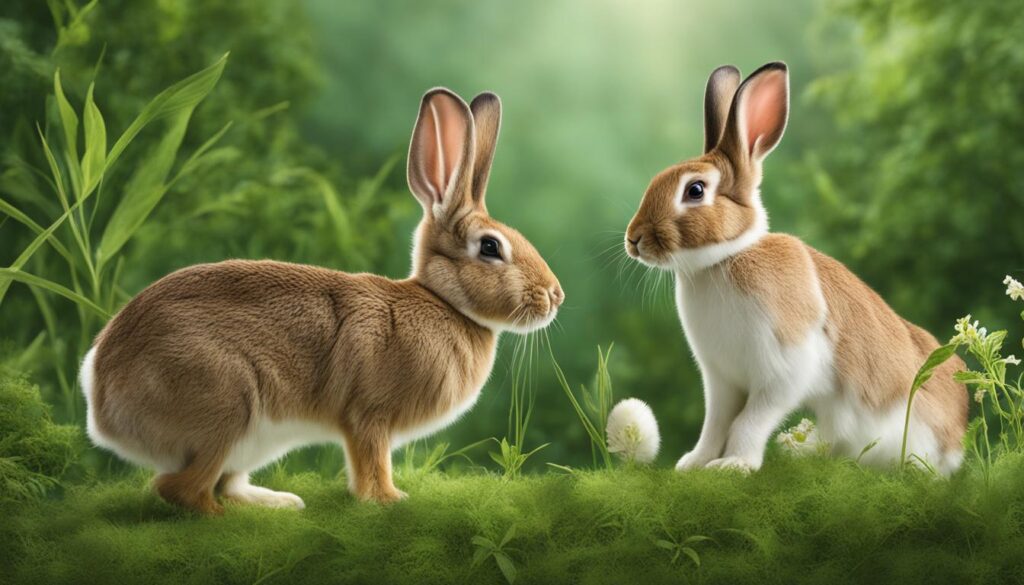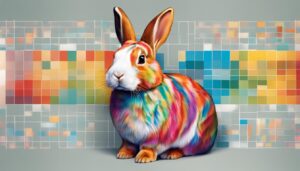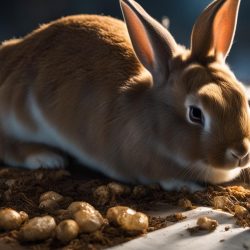We are excited to delve into the fascinating world of rabbits and explore their biology. Rabbits are warm-blooded mammals that exhibit a unique anatomy, lifecycle, behavior, diet, habitats, diseases, and genetics. Understanding these aspects will allow us to gain a deeper appreciation for these remarkable creatures.
Rabbit anatomy is characterized by their long hind legs and short front legs, enabling them to hop and move quickly. They have distinct features such as long ears and slightly protruding eyes, providing them with panoramic vision. Learning about their physiology will give us insights into their physical adaptations and how they interact with their environment.
Rabbit reproduction is a key aspect of their lifecycle. From the gestation period to the birth of their young, we will explore the different stages and understand the intricacies of their reproductive behavior. We will also examine the various growth stages of rabbits, from adolescence to old age, and how they evolve throughout their lives.
Rabbit behavior is another intriguing aspect to explore. We will uncover their social structures, territorial behavior, and their response to threats. By understanding their social dynamics, we can gain insights into their communication and social hierarchy.
Rabbit diet is crucial for their survival, and we will unravel the types of food they consume, their grazing habits, and their unique behavior of caecotrophy. We will also examine the different habitats where rabbits thrive and how they adapt to different environments to ensure their survival.
Unfortunately, rabbits are susceptible to various diseases, and we will shed light on common health issues they face, as well as the preventive measures to safeguard their well-being. Additionally, we will explore the genetic factors that influence the diversity and characteristics of rabbit populations, uncovering the fascinating world of rabbit genetics.
Key Takeaways:
- Understanding the anatomy and physiology of rabbits provides insights into their adaptability and physical capabilities.
- Rabbit reproduction involves different stages, and their lifecycle can vary depending on factors such as breed and environment.
- Rabbits exhibit complex social behavior and form social groups with intricate structures.
- Their selective grazing habits and caecotrophy behavior contribute to their unique diet.
- Rabbits thrive in various habitats and utilize burrows or warrens for protection and shelter.
- Common rabbit diseases can impact their health, and proper veterinary care is essential.
- Genetic factors play a role in the diversity and characteristics of the rabbit population.







